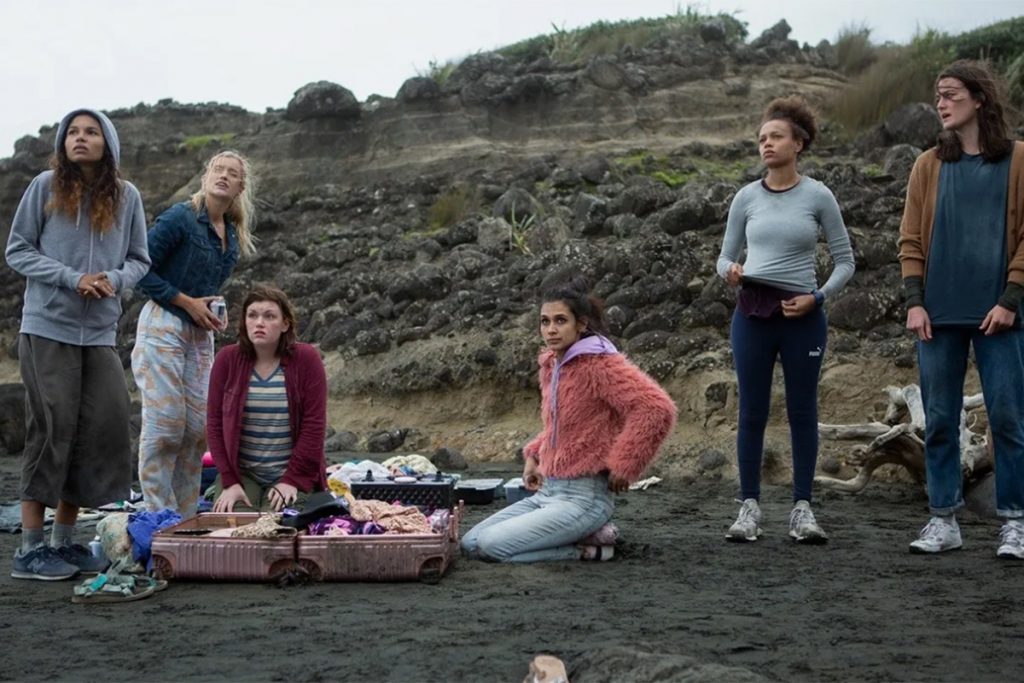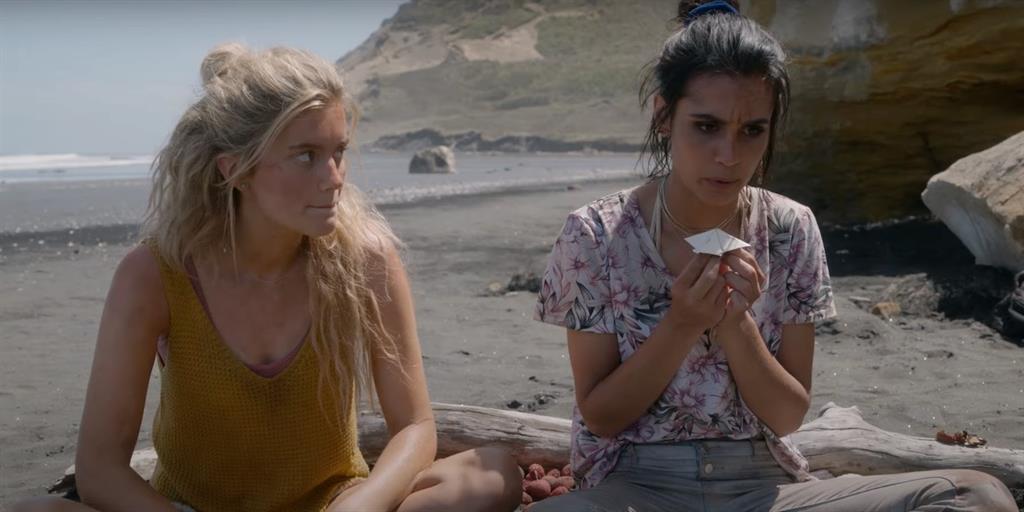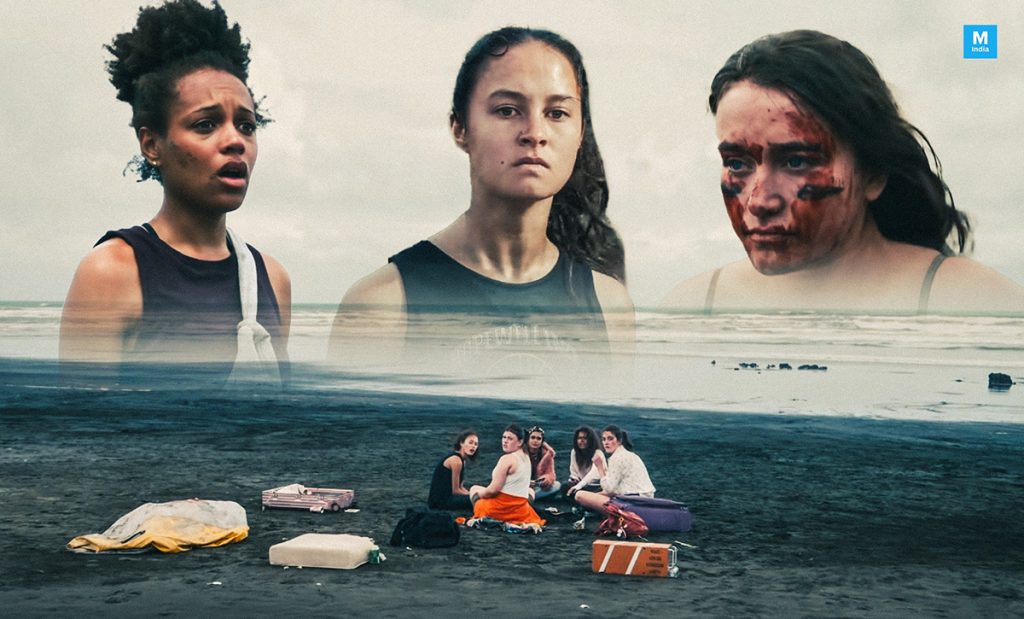Amazon’s new original series The Wilds has been billed as “LOST meets Mean Girls” by just about every critic, but what we want to determine here is just how much more LOST it is than Mean Girls.
Not that LOST is really considered post-apocalyptic, but it does have some dystopian overtones, and early musings over this new series hinted that it was very dystopian. But is it enough to be considered post-apocalyptic?
The way I figure it, in order for something to be post-apocalyptic, two things need to happen: 1) There needs to be a humanity-changing event, and 2) The story needs to take place after said event. Dystopian fiction certainly counts, but it’s a tricky area.
Let’s start with what The Wilds definitely is. The premise of the 11-part series is that a group of girls in their late teens are involved in a plane crash somewhere in the Pacific Ocean on their way to a retreat in Hawaii. As the group struggles to survive the elements of the island they now inhabit, they must also survive each other and figure out how to get rescued. But here’s the kicker: they are not on that island by accident.
WARNING: The rest of this post contains mild spoilers!
Each episode peppers in the backstory of each of the nine main characters, explaining more about who they are and why they were heading to Hawaii for a young women’s empowerment retreat in the first place. This, to me, is the most LOST thing about it. And also, much like LOST, the focus isn’t mainly on survival techniques and battling the elements but more on why these people are here and how everything connects.
Is the dystopian element in Amazon's The Wilds enough to make it count as post-apocalyptic? Share on XSee, very early on we see that the girls did survive because the story cuts back and forth between the island, the time before the island, and after the rescue when each girl is speaking with what we assume are federal agents in an interrogation room.
So the question of survival and rescue is moot at this point, yet we now turn our focus on which girls didn’t survive and how the rest actually got rescued.
But for the sake of this article, we’re going to skip the deep and varied intricacies of teenage life that The Wilds portrays so well and focus on the alleged dystopian elements. Early in the series, we meet Gretchen Klein who is the mastermind behind this whole ordeal. She and her small team of undependable minions are monitoring the girls from dozens of surveillance cameras hidden around the island. The addition of two moles within the group also helps relay important info back to Gretchen as she advances her theory about helping these girls with the problems they’re having at home through extreme situations.
Gretchen is a psychiatrist who convinced the parents of these girls that this social experiment would help turn their daughters’ problematic attitudes around, although they weren’t aware of Gretchen’s extreme techniques. As we see in their backstories, each girl has her own issues, but we also see the unravelling of Gretchen herself as her own story is revealed. This leads to a whole lot of mess-ups from the surveillance team, some injuries (and even a death), and a general suspicion about what’s really going on.
i love how @thewildsonprime gave us not one, not two, not three, but EIGHT complex and unique female characters
— danika is in the wilds (@spiderflow3r) December 27, 2020
In other words, the girls are smarter than Gretchen thought, and the story quickly evolves from “How will the girls survive?” to “How badly will Gretchen get into trouble when she’s caught covering up mistake after mistake?”
As an overall opinion of this series, I have to say that I was pleasantly surprised. I’ll get to the “pleasantly” part in a second, but I initially went into this expecting a good survival drama. However, at one point I actually had to take a break from it. Around the third or fourth episode, I was getting tired of hearing fake southern accents, constant tension, and an inappropriate amount of political commentary on the state of being “woke.” I mean, I get it… white blonde girls are bad, men are even worse, and everyone else is powerful and brave. This is just 2020 life, and I get that. But it really brought the attention away from what would have simply been a good story 10 years ago.
But here’s the thing: During my two- or three-day break from the show, it stayed with me. I wanted to know how they got off that island. I wanted to see the character development for the other members of the group, too. I wanted to see how Rachel lost her hand. So I came back.
I’m glad I did because all of those initial stereotypes and tropes that started out as nothing more than low-hanging fruit turned around in later episodes. Not completely, but enough to add some real, genuine layers to these characters that I didn’t expect.
As a dramatic thriller, I think The Wilds hits the mark. It’s interesting enough to keep you hooked in, and the pace and direction is extremely well-done. The acting is slightly uneven at first; I believe there are both stand-out performances as well as cringey ones, but for the most part, the main characters are impressive. The writers did a wonderful job of making us cheer for each character equally, through both the good and the bad. Go ahead and pick your favorite version of yourself in these characters, but at the end of the day, they’re all pretty relatable.
Now, is it post-apocalyptic? No. While there are creepy dystopian elements, they’re not enough to make it considered anything resembling post-apocalyptic.
The Wilds has already been approved for a second season, and the final five minutes of Season One may lay out exactly what we can expect with this follow-up season. I’m VERY excited to see where this goes, but unless there’s a sudden nuclear strike or wave of zombies on the show, I don’t think we’ll be covering it here.
Final Verdict: Not Post-Apocalyptic




Leave a Reply